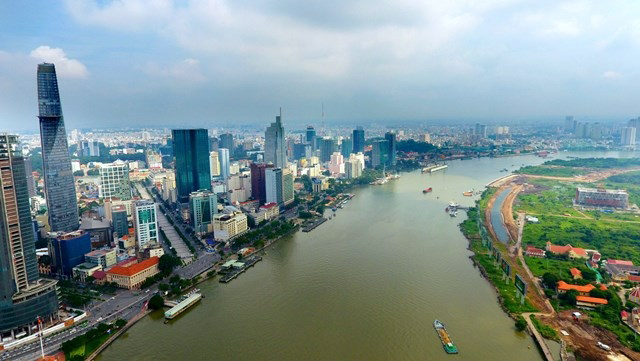


|
The smart urban planning is the
efforts and careful preparation of HCMC over many years to remove the current
difficulties and shortcomings, while improving the quality of life for its
citizens, in addition to acting as a measure to successfully realise its
breakthrough programmes.
According to Tran Vinh Tuyen,
Deputy Chairman of the municipal People’s Committee and Head of the city’s
smart urban management board, said that the goal of the project is to resolve
the city’s existing problems, such as rapid population growth, unsustainable
economic growth, obstacles to making and managing master plans and poor
healthcare, education and transport services, the environment and public
administration.
The project aims at sustainable
economic growth and moving towards a digital and knowledge-based economy,
efficient urban management based on development forecasts, while increasing
the quality of the living and working environment and improving oversight by
the public. It also targets creating a comfortable, positive, healthy and
safe living environment with convenient public transportation, good
healthcare, less crime and clean water and environment.
The smart city will focus on four
areas: local government, the public, enterprises, and social organisations.
For the local government, the smart city will precisely meet the development
forecast needs and through building e-governance, information and data will
be connected and shared to enhance the government’s operational and
management efficiency.
Enterprises will have a
transparent, simple and convenient environment and be provided with more
information to make better business decisions. The smart city will enable the
dissemination of information, thereby allowing service providers to
efficiently meet the demand. The public will be provided with all of the
information needed to make the best decisions. Interaction between the public
and local government will become easier and the public will be able to
oversee, manage and contribute ideas for building the city.
People will be able enjoy benefits,
such as low-cost electricity, convenient public transport, good healthcare,
quality education, clean water and environment, low crime and excellent
entertainment. Workers will have everything they need to ensure they can
compete in the international market, such as broadband internet; low-cost
green energy; opportunities to foster their education, knowledge and skills;
and reasonably-priced living and working spaces.
Speaking at the event, Politburo
member and Secretary of the municipal Party Committee Nguyen Thien Nhan said
that the National Assembly (NA) has just adopted Resolution No. 54 on the
piloting of specific mechanisms and policies to develop the city, so the
announcement of the project has shown the initiative and determination of
HCMC to achieve the highest efficiency possible.
Smart city development is the way
to solve urban problems and HCMC turning into a smart city would help to
solve any pressing issues during its development. In addition, through
intelligent urbanisation, local people and organisations themselves would
maximise their capacity, be innovative creators, while at the same time,
would monitor the implementation process, Nhan added.
Under the scheme, the four pillars
of the smart city building project will be first implemented next year,
including the construction of a shared database and open database eco-system,
an operating centre, a simulation centre to forecast local socio-economic
strategies and an information security centre. The city will call for
resources from society and the business community for construction of such
centres. In addition, it will also build ICT framework for smart city
development.
The project will be implemented by
the Vietnam Post and Telecommunications Corporation (VNPT), also the
consulting agency for the project development, after being piloted in
districts 1 and 12 and the Thu Thiem Urban Area in district 2.
Earlier, the recently-closed 14th
NA’s fourth meeting passed the important resolution on the specific
mechanisms and policies for the development of HCM.
|
Source: NDO